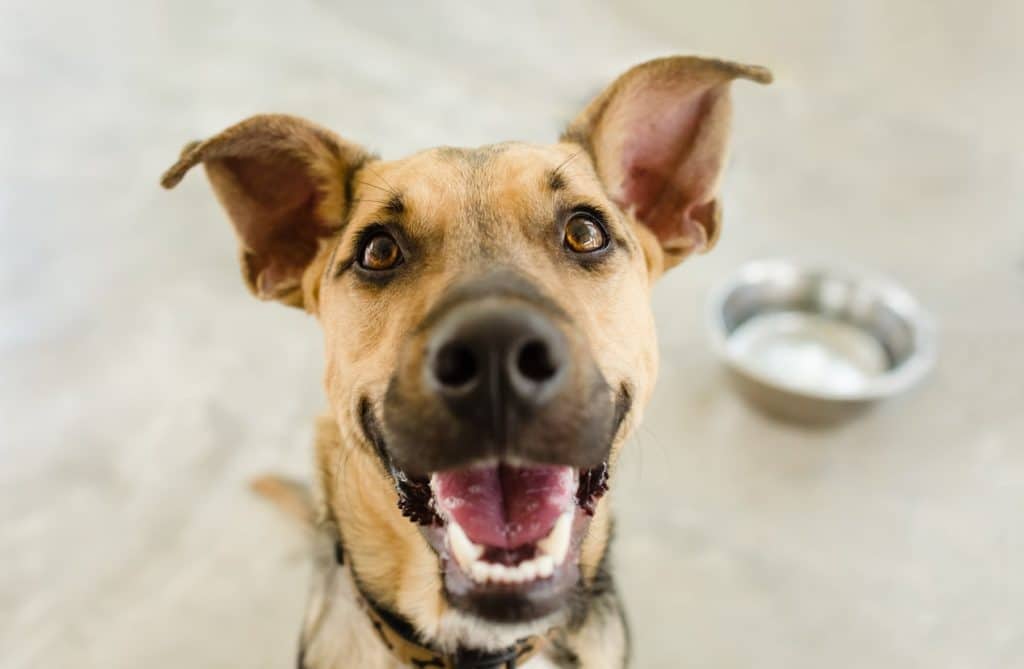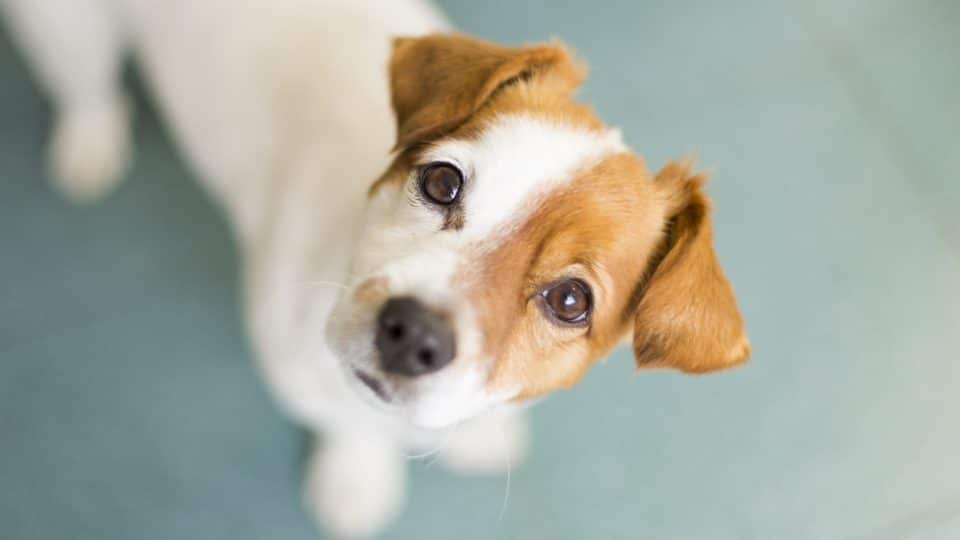While we often teach kids that it’s impolite to stare, dogs apparently never got the memo. Some dogs make a habit of staring at people and other pets without any regard for manners. This intense eye contact from your dog could mean many things and what you do when your dog stares could affect your relationship.
Luckily, staring is simply one of the ways dogs communicate, says Susan Nilson, dog training and behaviour specialist and founder of The Cat and Dog House. “It could be a sign of affection, a way to seek attention or communicate a need, or a way to find out what’s happening.”
So, if you’re curious to decode the hidden meanings of your dog’s intense stare, read on. Plus, learn the best way to respond to their piercing gaze.
7 Reasons Dogs Stare at You or Others
1. They learned you like it
As a result of domestication, dogs have learned to mimic human communication methods, like eye contact, as part of their vocabulary. For people, eye contact can carry more nuanced meanings, such as letting the other person know we’re listening.
2. It’s in their breed
Some evidence also indicates that certain dogs may be more likely to engage in eye contact than others. In fact, research shows dog breeds with shorter snouts, like Pugs, were more likely to establish eye contact with humans
Since dogs can’t tell us what they’re feeling, they can use tools like eye contact to cross the language barrier.
3. They want affection or attention
Does your dog stare you down when they want another treat? Many dogs already know that bringing out their puppy eyes grabs your attention and leads to getting what they want. Of course, it’s usually best to resist that aww-inducing stare if you want to discourage begging behaviour.
4. They’re investigating or analyzing their surroundings
Nilson says sometimes your dog may stare at you when they want to know what’s going on. For instance, they might perk up and meet your eyes when you walk by the door to see if you’re grabbing their lead for a walk.
5. They’re greeting someone new
Most dogs will establish eye contact when meeting each other for the first time. Older or more confident dogs may give a direct stare, while younger or more submissive pups might avert their gaze. When dogs follow this pattern during a greeting, it can lead to a fun play session!
Some dogs may do the same thing when meeting new people. In fact, playful and social dogs were more likely to establish eye contact with human strangers.
6. They’re possessive or stressed
Many animals consider eye contact a direct threat. Some dogs may give a hard stare-down if they’re feeling intimidated or threatened.
Nilson explains that dogs may give you a hard stare if they’re guarding a resource they don’t want to share, such as food, a favourite toy, or their bed. In these instances, some dogs may take prolonged eye contact from others as a challenge, leading to growling or teeth baring.
7. They feel happy and safe
Of course, sometimes your dog might initiate a loving stare to show you that they love you. Nilson says a gentle gaze often signifies that a dog is happy and content to interact with you.
Do Dogs Enjoy Eye Contact?
“Soft and direct eye contact, paired with a relaxed body posture, typically indicates that a dog is calm and feeling friendly,” Nilson says.
What’s more, establishing eye contact with your dog can even trigger the release of oxytocin, the love hormone, in people and dogs. Research shows pet parents found that direct eye contact increased oxytocin levels by 130% in dogs and 300% in people.
Should You Stare Back at Your Dog?
Of course, not all pups enjoy staring contests. “Prolonged eye contact can make some dogs uncomfortable,” Nilson explains. She adds that dogs with fearful dispositions or a history of abuse may purposefully avoid eye contact.
So, how can you tell if your dog’s stare is friendly or not? Nilson stresses the importance of reading your dog’s body language and responding appropriately. She suggests looking for common signs of stress in dogs, such as:
- Turning away
- Yawning
- Panting
- Lip-licking
- Rigid, stiff posture
- Raised hackles
If your dog shows any of these signs during eye contact, Nilson says to drop your gaze and give your dog some space. If your dog has issues with resource guarding, a trainer or behaviourist could help you manage their behaviour.

iStock/David Baileys
Other Ways to Build the Bond with Your Dog
Your dog may initiate eye contact when they want something, feel happy, or want to share the love. Just remember to pay attention to their body language for context clues, so you can respond to their gazes the way they want you to.
If you want to share the love with your pup, try taking a minute or two to lie on the floor and gaze into each other’s eyes. “This mutual gaze can strengthen the bond between dogs and their owners and make them feel good all around,” Nilson explains.
What’s more, dogs tend to follow pointing more effectively if you establish eye contact before giving them the cue. In situations like these, Nilson says that your dog may keep their eyes on you to stay engaged, participate, and anticipate what’s coming next, especially during dog training.



